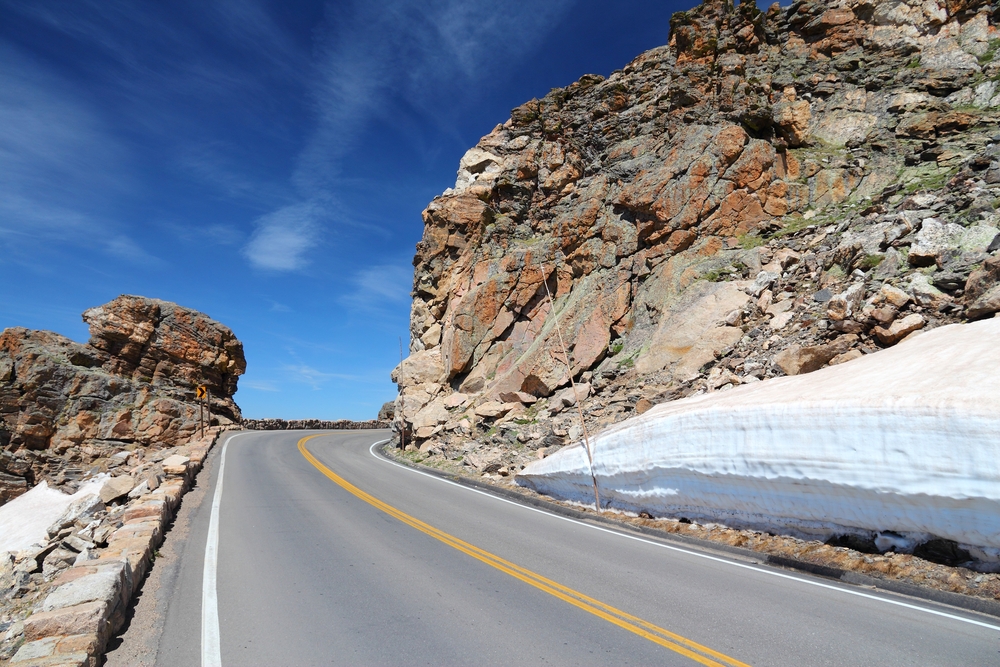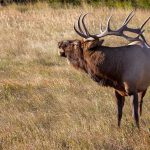Are you interested in driving through Rocky Mountains National Park but are unsure how and where to start?
Well, look no further than this article! Strap in and learn all about what this majestic location nestled in the heart of Colorado has to offer.
This is the perfect spot for wildlife enthusiasts and anyone who wants to explore and connect with nature!
The sights that surround the area are limitless, so no worries if you’re looking for something different — there’s plenty here for everyone.
In this article, I’ll take you through the best way to drive through the Rockies, as well as all the best sights to take in and activities to do in one of the coolest places on Earth.
I’ll also give you advice and insights on what the national park has to offer, such as:
- The best times to drive through the park
- Scenic routes you can add to your bucket list
- Some of the standout spots and trails to visit
- Other things to know and top tips for the best time ever.
So, lace up those hiking boots and get ready to explore one of America’s best and most iconic national parks!
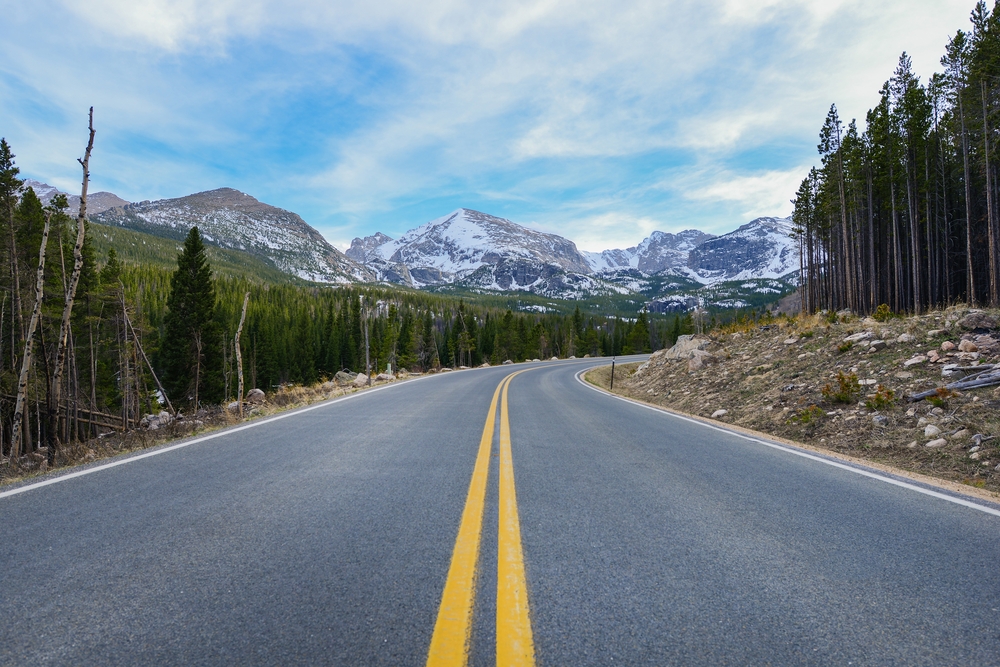
Overview of Rocky Mountain National Park
The Rocky Mountain National Park covers 415 square miles, or almost 266,000 acres.
With 147 lakes, over 300 peaks to explore, 355 miles of hiking trails, and a selection of wildlife that’ll blow your mind, this place is full of endless natural entertainment!
The park was established in January 1915 and is home to over 100 exotic plant species
and unique animals. Keep your eyes peeled for bears, bighorn sheep, deer, moose, and even the occasional mountain lion!
The park’s highest elevation, Longs Peak, towers over all of the other mountains. This giant looms over 14,200 feet high and attracts many climbers between mid-July and late August.
If you’re interested, know that you’ll need a lot of training because of the intensity level of this climb.
Rocky Mountain National Park itself was established to preserve the high-altitude ecosystems and wilderness of the southern Rocky Mountains.
It’s also designed to provide recreational use and access to the park’s wildlife, natural features, scenery, and cultural objects.
It’s an understatement to say that the national park is wilderness in its rawest yet most accessible form. And you know what that means: it’s the perfect place for driving around!
Best Time to Drive through the Rocky Mountain National Park
The best time to travel through the Rocky Mountain National Park is definitely summer. The weather is warmer and it’s generally safer to drive up all those windy mountains.
With the sun striking the scenery, everything looks even more beautiful. As a plus, you can stop the car and explore the sights on foot without getting too cold!
What Are the Scenic Routes to Take While Driving through Rocky Mountain National Park?
There are a few ways of exploring the national park by car. I’ve listed a few suggestions below for every type of exploration imaginable.
If you can, I highly recommend exploring the park by car to check out all the best locations you won’t find anywhere else. Besides, who knows what unique creatures, experiences, and sights you’ll stumble upon!
Just remember that the weather can impact your drive, so if you decide to explore in the winter, make sure you come prepared!
Trail Ridge Road
One option for driving through the park is to cut through it lengthwise! Set off via Estes Park and drive north into the Rocky Mountains National Park via Trail Ridge Road. The road will take you to Grand Lake on the west side of the Rockies!
The drive usually takes around 1.5 to 2 hours nonstop, but if you want to marvel at the natural sights, make sure to stop regularly and explore different areas.
However, be aware that the road is only open between spring and fall, usually from May to October.
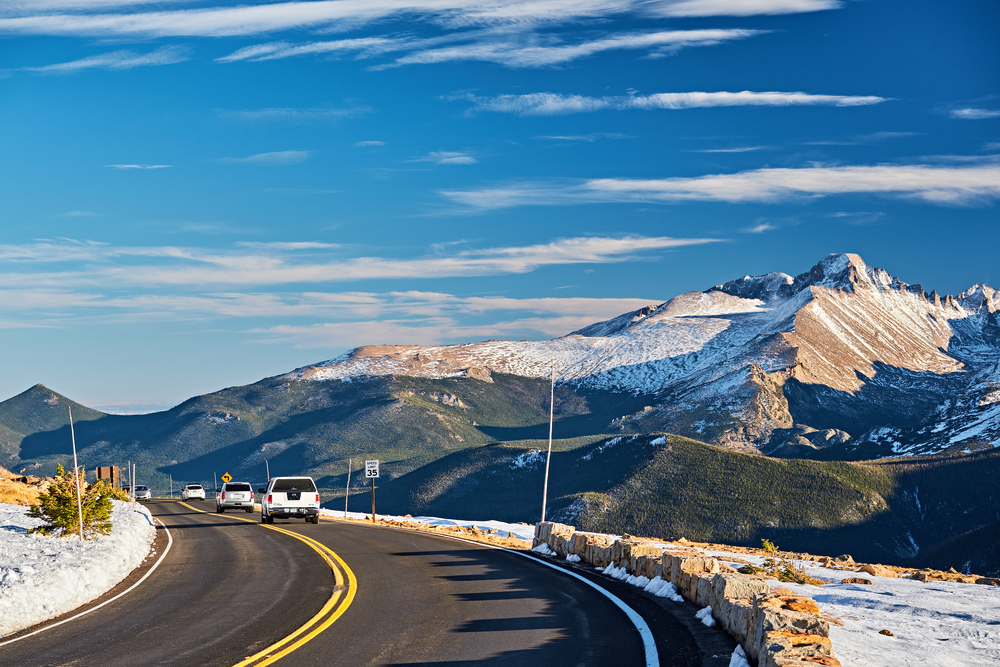
Old Fall River Road
If you really want to travel on the beaten path, why not go for one that’s been around since 1920? The Old Fall River Road sure fits the bill!
This gravel and dirt road, open between July and October, stretches nine miles from the Endovalley Picnic Area and takes you all the way up to the peak of Fall River Pass almost 12,000 feet above sea level.
Although the drive can be steep, the alpine sights are more than worth it.
Bear Lake Road
Bear Lake Road is another paved road that’s 9.2 miles long and a staggering 8,000 to 9,000 feet above sea level.
This scenic route will simply blow you away and is one I highly recommend — it provides some of the most iconic views within the national park!
Make sure you check out all the hiking trails that are spread throughout this road too. If you’re raring for some physical exercise, Bear Lake Road has you covered any time of the year.

Alpine Visitor Center
Sitting on some of the tallest peaks of the Rocky Mountain National Park, the Alpine Visitor Center is a must-visit during your drive!
You can find the Center along Trail Ridge Road, but if you’re up for a slower, more scenic, and more challenging drive, you can also pay a visit via the one-way Old Fall River Road.
As the perfect midpoint, the Visitor Center can be reached in less than an hour from either Estes Park or Grand Lake.

Horseshoe Park
Driving from Estes Park? If so, be sure to check out the Horseshoe Park along the way! This valley has a clearing in the middle where you can spot elk mulling around, especially during fall. often
No luck spotting the wildlife? That’s fine — Horseshoe Park is still an impressively scenic destination where you can simply relax and take a photo or twenty!
Wild Basin Road
If you want to drive while surrounded by tall valley peaks, head over to the Wild Basin Road!
This 2.2-mile stretch connects the Wild Basin Entrance to the Wild Basin Trailhead, so it’s a great spot if you want to go on a hike afterward.
Wild Basin Road features plenty of classic Rocky Mountains flora and is a relaxing drive overall. You’ll also pass by a picturesque creek where you can while away a whole afternoon simply watching it trickle away.
Popular Stops and Hiking Along the Way
While driving through the national park will treat you to the best sights in the area, there are still plenty of other popular spots and hiking trails you can visit to make the most of your time!
Popular Stops
- Bear Lake (Bear Lake Road): One of the most iconic spots in the national park, Bear Lake is popular all year round but especially during the summer months. This is a fantastic location for taking in the scenery, snapping a few photos, and enjoying leisurely hikes.
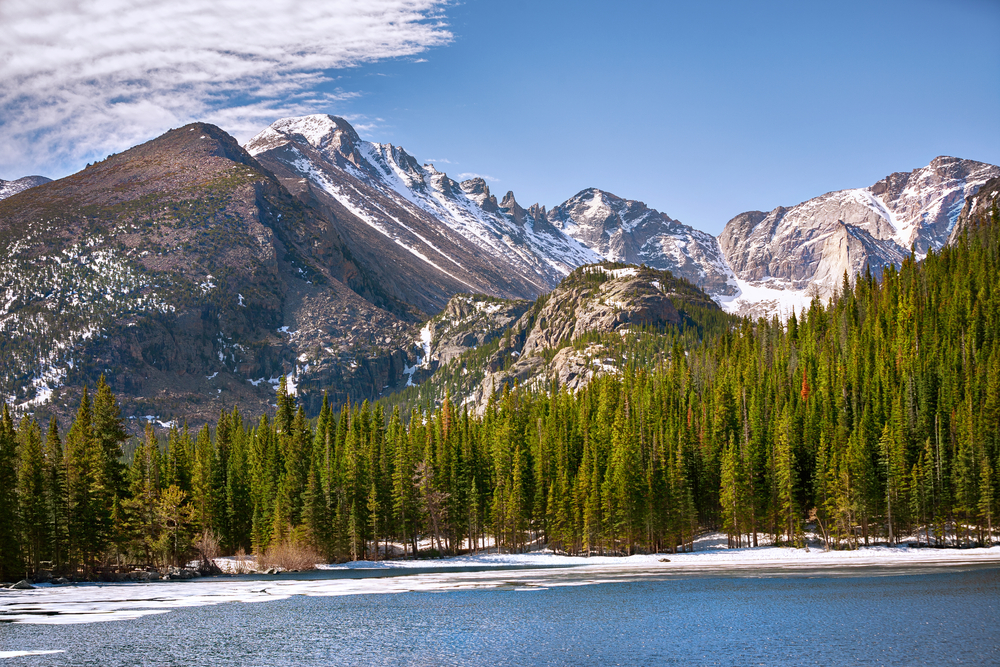
- Emerald Lake (Bear Lake Road): Dramatic lake in an alpine setting? Emerald Lake has you covered! The hike to the site may be a bit grueling, but you’ll be rewarded with majestic views that are hard to find anywhere else.
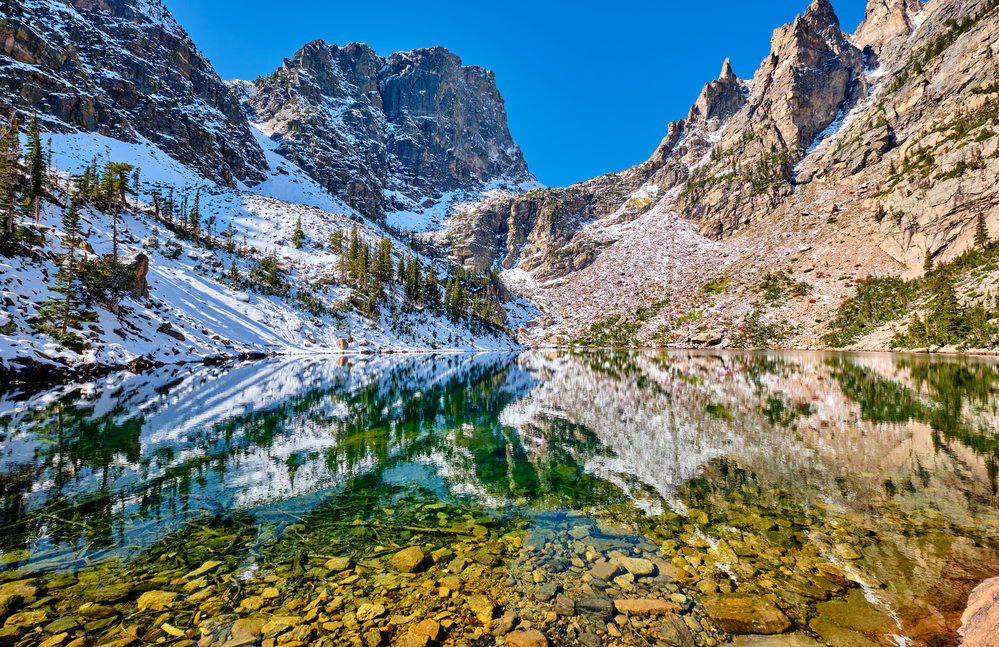
- Balanced Rock (Bear Lake Road): If you want to be awestruck by rock formations that leave you wondering, “How is that possible?”, then the Balanced Rock should definitely be on your list! It’s also very close to Gem Lake, another picturesque water body in the national park. Two birds, one stone!
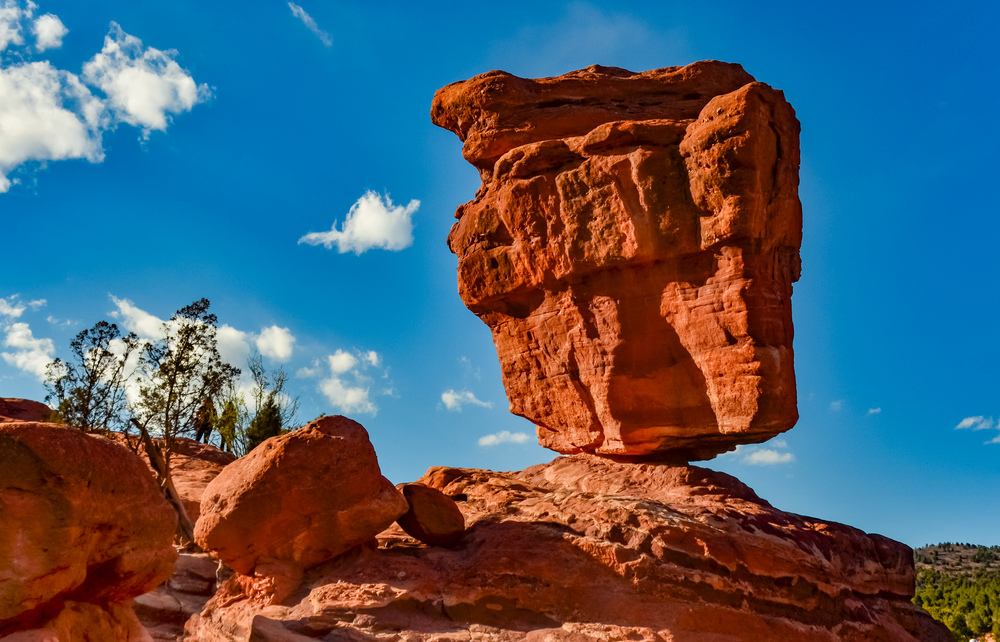
- Alluvial Fan (Old Fall River Road): Lakes aren’t the only thing that the Rockies are teeming with; there are also other unique formations you need to visit! One of these is the Alluvial Fan, a dramatic cascade of water that flows from higher rocky terrain. It’s a great spot for admiring nature.
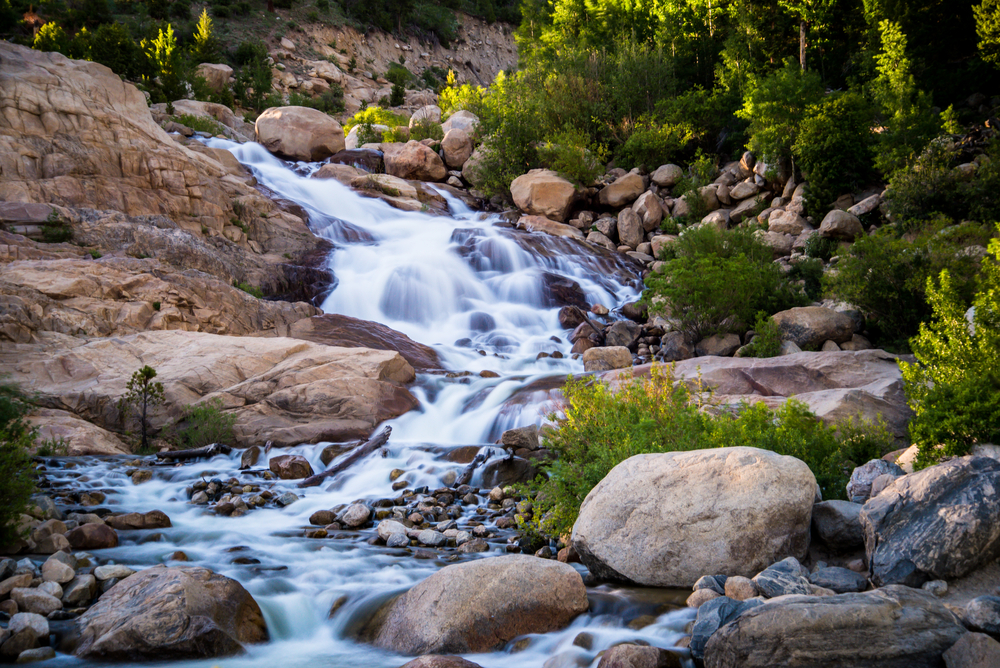
- Rainbow Curve Overlook (Trail Ridge Road): Want to feel like you’re on top of the world? The Rainbow Curve can help with that. Sitting on the boundary between the treeline and the alpines, the Rainbow Curve is the perfect place to enjoy other sights in the area like the Deer Mountain and the Alluvial Fan.
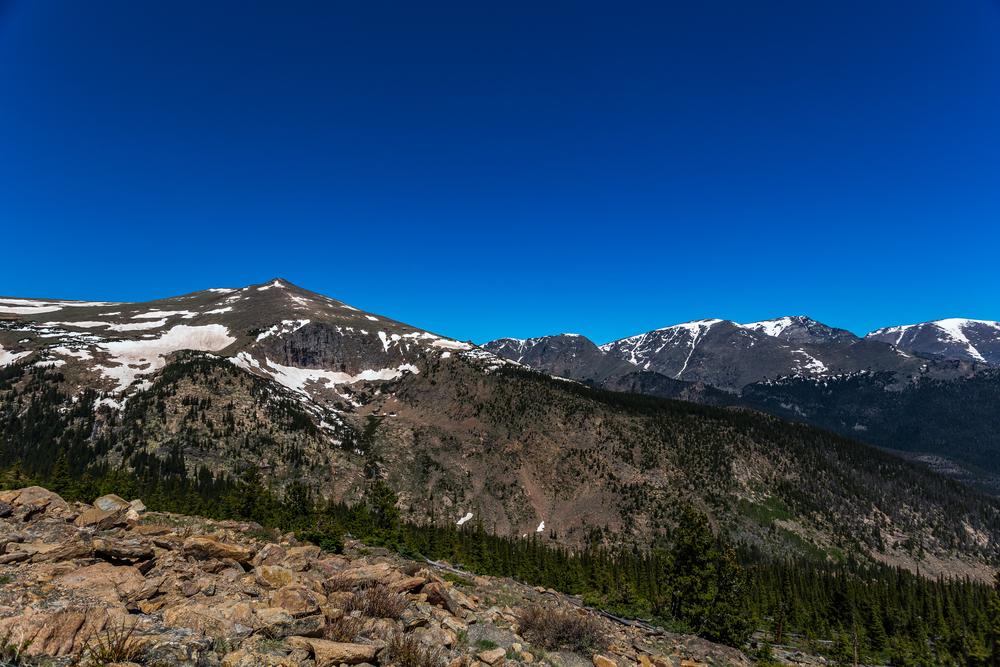
- Medicine Bow Curve (Trail Ridge Road): If appreciating the landscape is more your style, head over to Medicine Bow Curve! From this vantage point, you’ll look over the forests, local wildlife, and even as far as the state of Wyoming.
- Sheep Lakes (Fall River Road): The Sheep Lakes draw plentiful wildlife to its banks, and the scenery is some of the most beautiful in the Rocky Mountains! Be sure to steer clear of the animals and appreciate them from afar – and have your cameras ready!
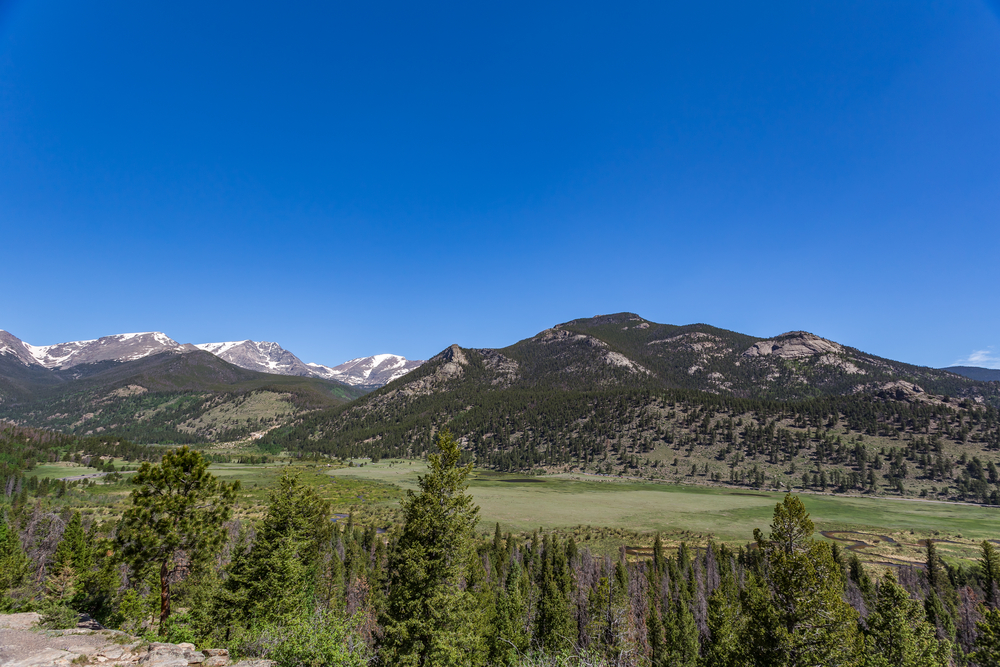
Hiking Trails
Rocky Mountain National Park has some of the best hikes that America has to offer. When visiting, make sure to give yourself enough time to tick a few hikes off the list!
- Sky Pond Trail (Glacier Gorge Trailhead Road): This nearly 8.5-mile trail takes you straight to Sky Pond, a lake known for its crystal-clear waters and pine-filled landscape. Heads up that this is a moderately challenging hike where you’ll need to scramble up a waterfall at one point!
- Alberta Falls Trail (Bear Lake Road): If you’re short on time, this there-and-back trail is a great choice. At only 1.6 miles long, the path takes you all the way to the Alberta Falls – an incredible reward for such a brief hike!
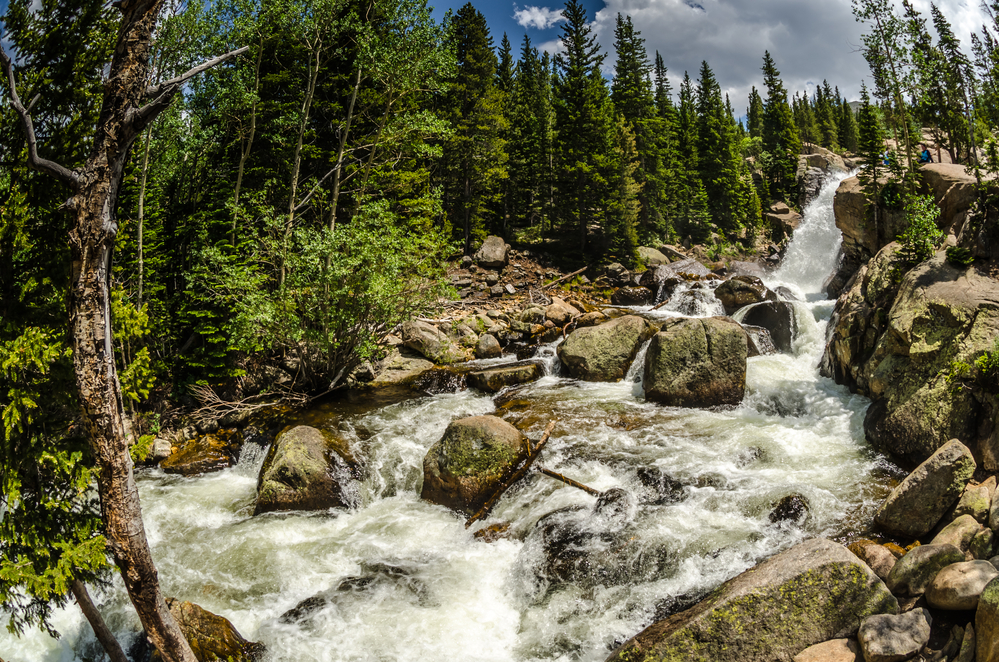
- Mills Lake Trail (Glacier Gorge Trailhead Road): Want some company during the hike? Check out the Mills Lake Trail, a 5-mile hike that sees plenty of foot traffic. You might just make a few new friends on the way!
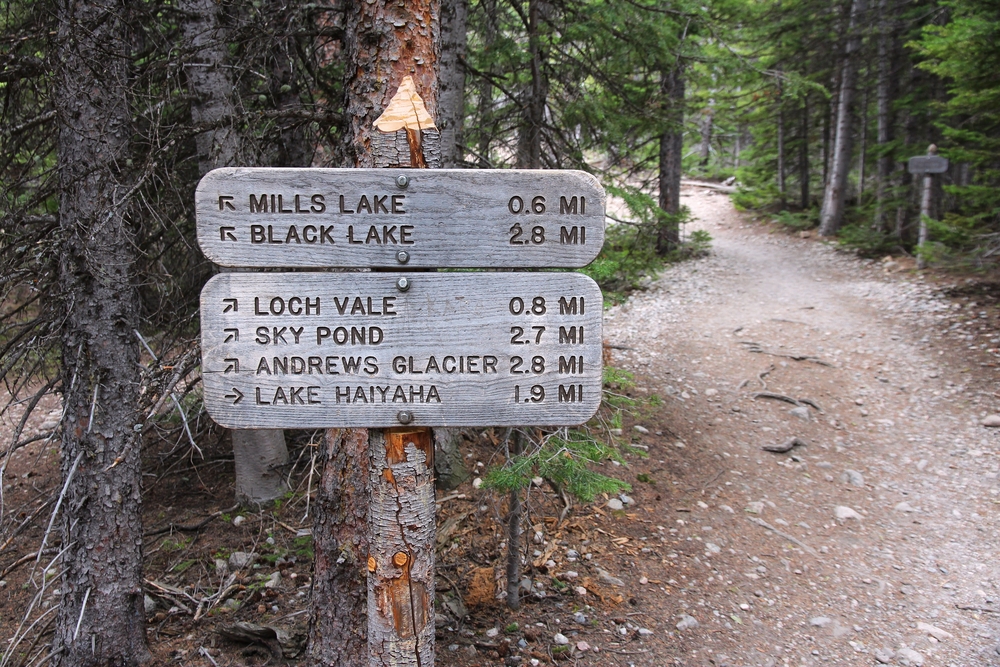
- Deer Mountain Trail (Deer Ridge Junction): If you have some energy to burn and plenty of time to spare, why not scale Deer Mountain? Just make sure to set aside around three to four hours to challenge this 6-mile trail. It’ll all be worth it; waiting for you at the end are majestic views that only Deer Mountain can offer.
- Chasm Lake Trail (Longs Peak Trailhead Road): Eight miles long and with a huge elevation change, the Chasm Lake Trail is the top choice for serious hikers. With its dynamic terrain and different conditions, this trail is sure to give you a full-body workout!
- Bierstadt Lake Trail (Bear Lake Road): Get those legs working with the steep incline that Bierstadt Lake Trail has to offer. The almost 3-mile long trail starts with you making your way up the cliffside before treading relatively even ground around the lake. If you’re physically fit, you can complete the trail in under two hours.

- Flattop Mountain Trail (Bear Lake Road): If you want something more challenging, check out the Flattop Mountain Trail. With a rocky section you need to scramble over and some fairly strong winds to battle at the top, this 2.8-mile hike is one you’ll be sure to remember!
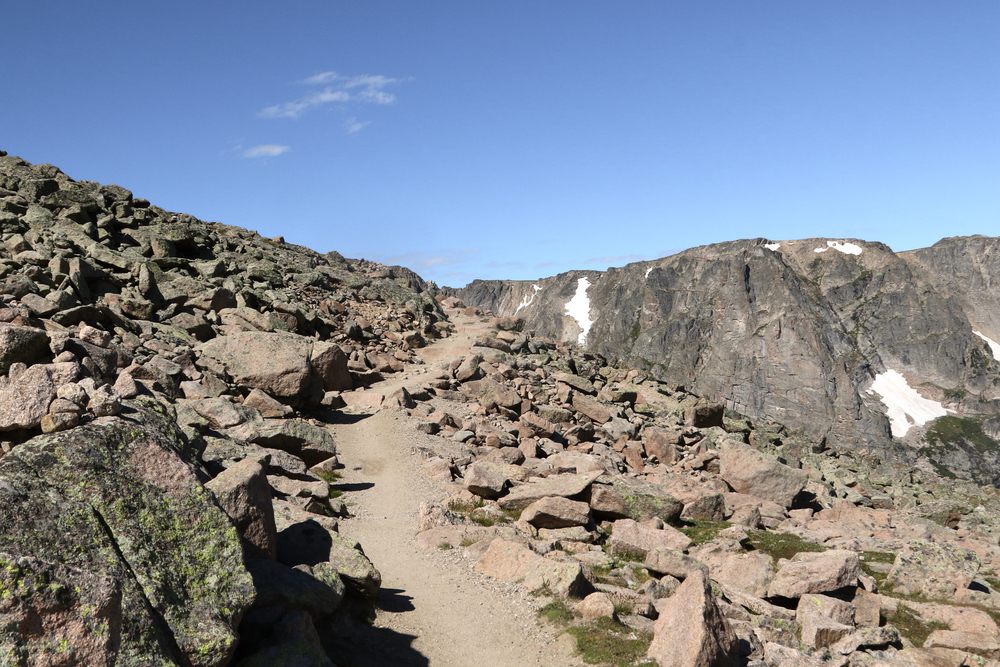
- Gem Lake Trail (Lumpy Ridge Trailhead Road): Although it’s only a little over 3 miles long, Gem Lake Trail still poses a challenge with its steep incline. It’s practically an ascent all the way to the end!
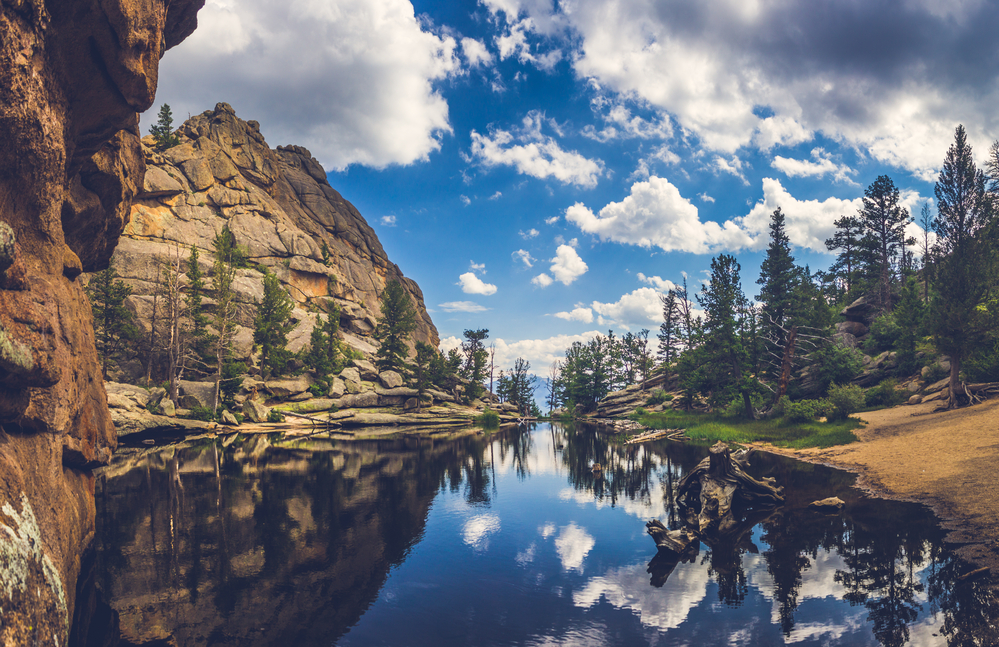
What If I Want to Stay for Longer?
Are you raring to drive through the Rocky Mountains, but don’t want to experience the scenery only in passing? Why not spend a few more days, and stay a while too? Here are some things you need to know if you’d like to explore everything that the national park has to offer!
Entering the Rocky Mountain National Park
To enter the park, all visitors must have an entrance pass. There are a few types of passes available, such as a 7-day pass or an individual pass for those who don’t have cars.
Check out the different passes and their prices below:
- One-day vehicle pass: $30
- Seven-day vehicle pass: $35
- One-day motorbike pass: $25
- Seven-day motorbike pass: $30
- One-day individual pass (no car): $15
- Seven-day individual passes (no car): $20
- Annual pass: $70.
More information on pricing for the park can be found here. Just remember that in the summer months, a timed entry permit is required as well as a park pass to enter the national park.
The main entrance can be found on Highway 36, just four miles from Estes Park. You can also use other routes such as the Wild Basin, Grand Lake, or Falls River entrances.
How Many Days Do I Need to Explore All the Sights?
When deciding how long to spend in the Rocky Mountain National Park, it’s important to factor in the distance it takes you to get there and back, what activities you want to do, the season you visit, your budget, travel style, and your personal preferences.
Distance
How long you travel will contribute to the total amount of time you spend at the national park.
For example, if it takes you a day to travel there and a day to travel back, you want to make sure you have several full days to explore and – of course – to relax!
However, if you’re only a few hours away and want to be active throughout that time, then a shorter stay may work just as well for you.
Activities
The national park has so many activities and sights, both paid and unpaid. The options here are simply limitless!
The activities you choose and the budget you have will contribute a lot to how long you spend at the national park. The season you visit in will also have a significant impact!
Winter is cooler and there isn’t as much to do, but if you’re into mountain sports, this could be the best time to go.
Trip Budget
The trip budget is always a hard one to manage. Who you’re going with, the length of time you want to be away, and what you want to get out of the trip are all important factors in deciding your budget.
Bear in mind, however, that you don’t need to splurge! You can do and see a lot of things even on a tight budget.
Here are some ideas to cut the cost of your trip down:
- Book in advance and stay at a campsite. Campsite prices go up the closer you are to the peak season. In summer, all campsites cost roughly the same and range from $50 to $70 per night depending on the size you’re booking.
During the winter, Moraine Park Campground is the only open campsite, and it costs $30 per night. - Do some grocery shopping before heading out and make your meals instead of buying food all the time.
- Drive your car in so that you can explore other areas of the park.
- Get lots of hikes in. You have the choice of hundreds of miles of trails in the area!
- Bring your own entertainment and relax in the beautiful natural surroundings.
If you have a larger budget and want to have a comfortable stay, there are also tons of cool chalets and accommodations available. You can even go on guided tours and rest up in Estes Park at the end of the day!
Travel Time
Rocky Mountain National Park sits northwest of Denver, Colorado, and is about an hour and a half drive away.
If you’re from an outer state, it can be a good idea to fly to Denver International Airport and hire a car. There are also plenty of shuttle services that travel to and from Estes Park.
Visitor Centers
There are many visitor centers within the Rocky Mountain National Park, and they all have park rangers to assist you.
Some of the best main centers include the Beaver Meadows Visitor Center, the Alpine Visitor Center, the Kawuneeche Visitor Center, and the Wilderness Office.
How Many Days Do You Need for Rocky Mountain National Park?
Ideally, the perfect amount of time to spend at the Rocky Mountain National Park is at least two days, with longer stays being an even better option. However, the exact length depends on your plans and interests!
If you want a more relaxed trip but also want to go on as many hikes as possible, a longer stay is recommended.
However, if you’re a go-getter and want to jam as much as you can in a small amount of time – that’s also possible!
Overall, staying for a minimum of two days is the sweet spot so you can explore everything the park has to offer. Go out, enjoy hikes, take photos, and spend time immersed in nature.
Spread your stay out and get the most out of your trip. Personally, I’d highly recommend spending nine days in the park so you can enjoy pretty much everything that’s there; all of the tracks and quaint, quirky townships in the surrounding areas.
Additional Tips for You
While preparing for your trip, make sure to follow these additional tips for your safety and to have the best time possible!
Driving Safety Tips
Obey the following driving safety tips:
- Obey speed limits and road signs
- Use seat belts at all times
- Watch for wildlife on the road
- Use headlights during bad weather or low visibility
- Pull over to rest if feeling fatigued
- Be cautious of falling rocks and debris
- Use designated parking areas
- Stay on marked roads and trails.
Check the Weather Forecast before Heading Out
It’s always important to check the weather before heading out, especially in an environment that’s known to have extreme weather conditions.
The weather in the Rockies sits at a comfortable range in the summer months. However, in the winter the weather changes drastically – freezing, snowy, and windy. The cold season usually lasts 3.5 months, with the coldest month being January.
Start Hikes Early to Avoid Crowds
The recommended month to explore the Rocky Mountains is from June to August. This is because the temperature isn’t as cold and extreme.
However, in July, the number of visitors peaks, so you can expect the area to become very busy.
As such, it’s best to start hikes earlier to avoid the crowds. You will notice that if you start your hike an hour earlier than planned, the crowds will be less intense and you’ll enjoy your trek even more.
Bring Layers for Changing Weather
As mentioned above: the weather in the Rockies is dynamic, so it’s best to bring a change of clothes to avoid freezing or overheating. This is especially true if you’re moving around a lot.
Remember that although temperatures can be mild, there’s always a chance that the weather will suddenly change and for a storm or winter blast to catch you off guard.
Stay On Marked Trails
Trails are marked out to direct and protect hikers on their journey. Exercise common sense and keep yourself on the marked tracks!
Going off-road only leads to problems, so save yourself and the people around you the hassle of needing to be rescued.
Pack Sufficient Water and Snacks
As always, water and snacks are essential when hiking and exploring.
Beat those hangry tantrums and come prepared with food and water, as you won’t find yourself running into any convenience stores or restaurants in the Rockies!
Respect Wildlife; Maintain Distance
The Rocky Mountain wildlife is unique and includes many of North America’s most iconic animals such as grizzly bears, elk, grey wolves, and more.
This is their natural habitat, so it’s important to maintain a safe distance and respect their home.
Remember that these animals can be dangerous to humans if they become riled up or disturbed – so stay away!
Carry a Detailed Park Map
Yes, we live in a society where technology is very advanced and everything can be found on the web.
However, mobile service is sometimes spotty in the national park, and you never know when you will run out of power! Think ahead and bring a detailed map just in case; better to be safe than sorry.
Check for Any Required Permits in Advance
You don’t want to be stung by hefty fines just because you didn’t bother to do your research before going to the Rockies! So, please do yourself a favor and look into what permits are required in advance.
Pro tip: Make sure you check out the permit and pass webpage. During the summer, you will need a timed entry permit as well as a park pass.
Check Road and Weather Conditions before Starting
Weather conditions can change your plans entirely, so be prepared for any type of weather that comes your way.
It’s super important to regularly check the park weather updates leading up to your trip and when you’re on it. Make sure you always carry the essentials with you just in case!
Fill up the Gas Tank before Entering the Park
This is a huge non-negotiable when exploring any area by car. Be prepared and keep your gas tank full before heading out on the road. You don’t want to run out of fuel while in the middle of nowhere!
Conclusion
Driving by car through the Rocky Mountain National Park is truly one to tick off the bucket list!
Prepare to be captivated by some of America’s most breathtaking views and natural attractions; the beauty that surrounds this place is unmatched.
As we’ve explored in this article, the journey you decide to take through the Rocky Mountains all depends on what you want to get out of your experience.
There are so many different ways to explore, so take the time to sort out your length of stay, interests, sights to see, and your budget.
Make sure you go into the Rocky Mountains as prepared as possible so you can enjoy the beauty around you without worrying about a thing! Pack your bags and ready your car for the road trip of a lifetime; the Rockies are sure to blow you away!
FAQs
Can you just drive through Rocky Mountain National Park?
Yes, you can! As long as you have a park pass and have checked the permit regulations then you are good to go.
This is often the best choice when it comes to exploring the sights for people who don’t have a lot of time to spare.
Is it worth it to drive through Rocky Mountain National Park?
It’s 100 percent worth driving through! Having free reign of where to go and how long you spend there will make your experience that much more memorable.
Make sure to take your time and soak in all the natural beauty — the Rockies are in a league of their own.
Can you drive through Rocky Mountain National Park for free?
Unfortunately, you can’t. There are certain requirements that vehicles must have before they can enter and drive through the national park.
Check out the “Entering the Park” section in this article to learn more about the entry costs and permit types needed for your visit.
Is Rocky Mountain National Park easy to drive?
Driving around the national park is generally easy because most roads are wide and well-paved. There are also plenty of stops you can pull over to rest and enjoy the view.
Just remain careful when driving from Estes Park to Grand Lake as the road can become winding and steep at certain points!
Can you drive to Rocky Mountain National Park in one day?
Yes, you can. However, it’s not really the best way to enjoy all the sights the park has to offer.
I recommend that you spend a few days within the park to check out the scenery and go on a few hikes. That way, you won’t need to rush and can enjoy your time out in nature more!
Can I camp in my car at Rocky Mountain National Park?
You can’t just camp anywhere in the Rocky Mountains! Even if you want to go dispersed camping, there are only a few places you can do so that are outside the park itself.
You’ll have to stay in designated campsite areas if you want to spend the night in the park!

